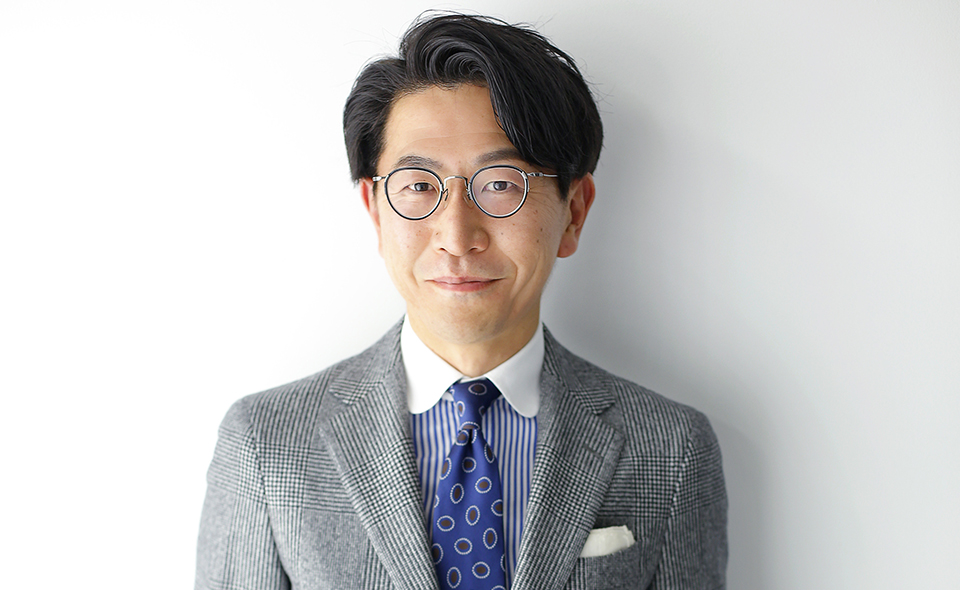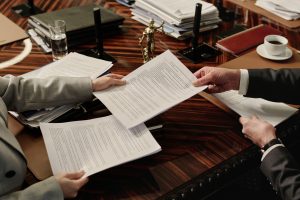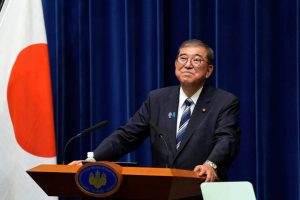In this article we hear from Masaki Morishima, a veteran patent attorney and partner at Saegusa & Partners, who offers an in-depth analysis of Japan’s patent prosecution landscape, looking in particular at biotech and the sciences.
For the benefit of our international readers, could you please outline the process of patent prosecution in Japan and the key regulation that underpins it?
The process of patent prosecution in Japan can be initiated by filing a national application directly with the Japan Patent Office (JPO), or by entering the Japanese phase of a PCT application. For either route, a request for examination must be filed in order for an examiner at the JPO to examine the patentability of the application.
Since this request can be filed at any time within three years from the date when the patent application was filed, the examination proceedings can be delayed, if necessary, by filing the request as late as possible. Such an approach is useful for biotech start-ups and the like, especially when they want to buy time to make critical decisions during patent prosecution (e.g. how to amend the claims), as it may take some time for them to finalise the details of their product or service.
Such a ‘wait-and-see’ approach can also be accomplished by filing a divisional application (a child), as the same scope as that of the earlier application (a parent) can basically be pursued by a divisional application. Issues regarding the case of a double patenting situation between the parent and child can be cleared up later by making amendments to either or both of the claim sets in order to avoid overlap. There is no restriction on the number of generations of a divisional application; for example, based on a child application, a further divisional application (a grandchild) can be filed, and so on.
Coming back to the process of patent prosecution after filing a request for examination, if an examiner determines that the patent application is not allowable, an office action (OA) is issued. This provides the applicant an opportunity to file a response – amendments to claims etc., if any, in addition to counter-arguments. If the examiner maintains the previously notified rejection even in view of the applicant’s response, a rejection decision is issued.
An applicant can file an appeal against the rejection decision if they would like an appeal board (made up of three appeal examiners, who are more experienced than normal examiners) to review the case. The appeal board’s decision is appealable to the Japan IP High Court. Additionally, when filing an appeal, the applicant should consider whether to file a divisional application as a fall-back measure.
The key rationale underpinning patent prosecution in Japan is, according to the JPO, “early establishment of strong and stable patent rights.” In order to accomplish this, the JPO has accelerated the speed of examination, while providing multiple measures for revocation for third parties. After grant, any party can file an opposition within six months, and an interested party can file nullity proceedings at any time. The JPO seems to expect that these revocation challenges, especially oppositions – which must be initiated at a very early stage after grant – will help to improve the quality of patents as a whole, as bad-quality patents would be revoked shortly after their grant.
The key rationale underpinning patent prosecution in Japan is, according to the JPO, “early establishment of strong and stable patent rights.”
However, we tend to think that the current situation somewhat differs from the JPO’s expectation. Specifically, the grant rate at the JPO is currently around 75%, which is relatively high when compared to the numbers in other major jurisdictions, such as the USPTO, EPO, etc. We do not know whether this is an unwanted by-product of the examination acceleration that the JPO has achieved in this decade. At the very least, the JPO appears to expect that the opposition system newly introduced in 2015 would help improve the quality of patents. However, in reality, the opposition rate has been extremely low; only seven patents out of 1,000 granted patents were opposed in 2021. Therefore, we believe that the current patent scene in Japan is quite patentee-friendly; namely, a patent can be easily obtained, and with high speed.
How long can the patent prosecution process be expected to take, and are there any reliable methods of expediting it?
According to the latest official statistics, patent pendency (namely, the period from the date of examination request until a final deposition, including a grant of a patent) was 15.2 months on average in 2022. This is already the shortest period among major jurisdiction, such as the USPTO, EPO, etc., but the period can be accelerated even further by various official requests. Namely, requests for an accelerated examination, a super-accelerated examination, and entry into the Patent Prosecution Highway (PPH) program are available, as long as certain requirements are met.
Under an accelerated examination, the first action pendency (the period from the date of the examination request until the JPO sends the first OA) is around 2.3 months (for a normal examination: 10.1 months), and this can be further accelerated under a super-accelerated examination. Most patent applications filed by applicants based outside Japan are likely to meet the requirements for both types of accelerated examination.
When it comes to biotech-related patent filings, how can an applicant best increase their odds of having their application accepted?
Even if the grant rate at the JPO is extremely high, there are some caveats. For example, although the JPO takes a relatively generous approach on added matter in the case of amendments, they tend to be relatively strict regarding the support requirement – namely, in regards to what extent an applicant is allowed to generalise, in a claim, the technical evidence given in the specification as filed. Such evidence is typically in the form of experimental data, and such generalisation is significant in the field of biotech.
The grant rate at the JPO is currently around 75%, which is relatively high when compared to the numbers in other major jurisdictions
In view of this, we believe that if sufficient technical evidence is included in the specification as filed, there is a good chance of obtaining a reasonable scope in Japan, especially when taking into account the JPO’s generous approach regarding amendments. This is because such sufficient technical evidence allows a broader scope, whereas a ‘cosmetic’ amendment that only carves out the prior art or non-working embodiments, etc. may be possible under the JPO’s generous approach on amendments, even if there appears to be no clear basis in the specification as filed from the non-Japan-based practitioner’s point of view.
In what ways can the skills of a dedicated patent attorney prove to be essential here?
A dedicated patent attorney can act as a mediator who helps streamline communication between the examiner and the applicant, explaining the examiner’s messages to the applicant so that they can understand the examiner from the point of view of practitioners in their country or region, as well as explaining the applicant’s messages to the examiner so that the examiner can understand the applicant from the Japanese practitioner’s point of view. Obviously, this requires a deep understanding of not only Japanese practice but also the local practice of the applicant’s country or region, enabling dedicated attorneys to understand the mindset of both sides.
Speaking from your own experience, what are the most common mistakes that you see made during patent prosecution?
It has become more and more common for us to be asked to take over cases under examination from other patent firms, probably in order to increase the chances of success regarding cases that appear to be stuck. In those cases, we often find that the previous firm’s responses to the examiner’s grounds of rejection do not seem to directly address the examiner’s comments, but rather stick to their own theories.
What we learned from this is that it is essential to address the exact reasons why the examiner thinks that the claimed subject matter is not patentable. While doing so may be easier for applicants for cases before their local patent office because of a deeper understanding of local practice as well as the local language, the same should also go for Japanese cases – with the help of a good Japanese patent attorney.
What considerations should biotech start-ups keep in mind when it comes to managing and expanding their patent portfolios?
Firstly, in order to reduce costs as much as possible, applicants should consider applying for a fee discount, which can be applied to fees for requesting examination as well as patent right registration (for the first 10 years). If a biotech start-up satisfies the discount requirements, a maximum of two-thirds of the above fees will be discounted.
Secondly, given that both the grant rate and the examination speed is high at the JPO, applicants should consider filing and prosecuting in Japan first, and then using the granted Japanese patent as a basis for examination under the PPH in other countries – particularly other Asian countries, where the JPO has a strong influence – in order to obtain geographically broader protection.
Thirdly, if a biotech start-up is balancing whether to file a patent application (inevitably leading to disclosure of their invention) or to keep it as secret knowledge (in consideration of the risk of allowing competitors to imitate it), very careful consideration in this regard is necessary. This is because it is generally believed to be difficult to effectively argue prior user rights before the court.
It is essential to address the exact reasons why the examiner thinks that the claimed subject matter is not patentable.
Specifically, in theory, even if a prior user is sued by somebody for patent infringement, the prior user may be entitled to continue the disputed business by arguing their prior user rights, if they had already initiated or had been preparing to initiate that business before the filing date of the patent in suit. However, the hurdle to do so is relatively high. In view of the fact that the grant rate is relatively high, a prior user may rather want to file their own patent in order to cover their business.
During your years in practice, what changes have you observed in the patent prosecution landscape regarding biotech IP?
There have been great developments in three areas: namely, a technical effect in the context of inventive step, support requirement, and inherent disclosure.
The guidance on how to evaluate technical effect in the context of an inventive step has been developed in recent years before Japanese courts, including the Supreme Court of Japan, and I believe that now we have a clearer view of it. While this guidance should be welcomed, it also means that some patents granted under the old standard may be revoked under the current standard. Thus, careful review is necessary to evaluate those patents.
The same is true regarding how to decide whether a support requirement is met, and we recommend including as many fall-back positions as possible in the specification in order to carve out non-supported subject matter by way of amendment in the event that the JPO makes a negative decision in this regard, as it is likely that the JPO will apply a somewhat stricter approach regarding the support requirement than the approaches applied by other patent offices.
Lastly, an inherent disclosure is a situation wherein, for example, the technical feature in a claim in question is not explicitly disclosed in a prior art document, but is necessarily possessed by a material disclosed therein. Such a situation frequently occurs in the field of biotech. In the case of a product claim, our proposed solution for the above problem is reformulating it into a use-limited product claim wherein a use having a link with the disputed technical feature is stated. The reason for this is that the JPO and the courts tend to acknowledge the novelty of the subject matter claimed therein as long as prior art documents are silent about such a use, which is likely the case.
[ymal]
The above strategy is possible in Japan, as a stated use in a product claim directed to a non-medical subject matter also has a limiting effect, unlike the EPO’s medical use claim practice.
What advice would you give to a less experienced patent attorney regarding biotech patent prosecution?
Some biotech patents are based on cutting-edge technologies, and we often encounter situations in which an examiner does not seem to correctly understand the technology underpinning the patent application under examination. However, less-experienced patent attorneys will tend to blindly accept what an examiner argues before thoroughly analysing the argument.
Thus, our advice for these attorneys is that in order to be more effective, they should trust in the power of invention, and should rather start with the mindset that the invention must be something patentable, as the aim is to get a patent granted. From our experience, even in cases where getting a patent grant appeared to be hopeless, we could usually find a way through in the end. Therefore, an approach with the above mindset is more effective than one that starts from doubting the patentability of the invention.
Masaki Morishima, Partner
Kitahama Konishi Building, 7-1, Dosho-machi 1-chome, Chuo-ku, Osaka-shi, Osaka 541-0045, Japan
Tel: +81 6 6203 0941
Fax: +81 6 6222 1068
E: m-morishima@saegusa-pat.co.jp
Masaki Morishima is a patent attorney and head of the International Client Department at Saegusa & Partners, with more than a decade of experience in patent prosecution. He is also co-head of the firm’s Chemical and Biotech Department, responsible for overseeing the work of almost a dozen attorneys and staff. His own practice involves working with large multinational corporations filing patents and launching products in Japan, drawing upon his wealth of experience in drafting and prosecuting patent applications.
Saegusa & Partners is one of Japan’s leading patent firms. Founded in 1946 and headquartered in Osaka, Saegusa & Partners boasts a team of experts whose practices cover organic and inorganic chemistry, biotechnology, pharmaceuticals, foods, cosmetics, machinery and electronics. The firm is especially proficient in patent law matters relating to the field of chemistry and biotech, and each of its past presidents has been a patent attorney with expertise in chemistry.





















